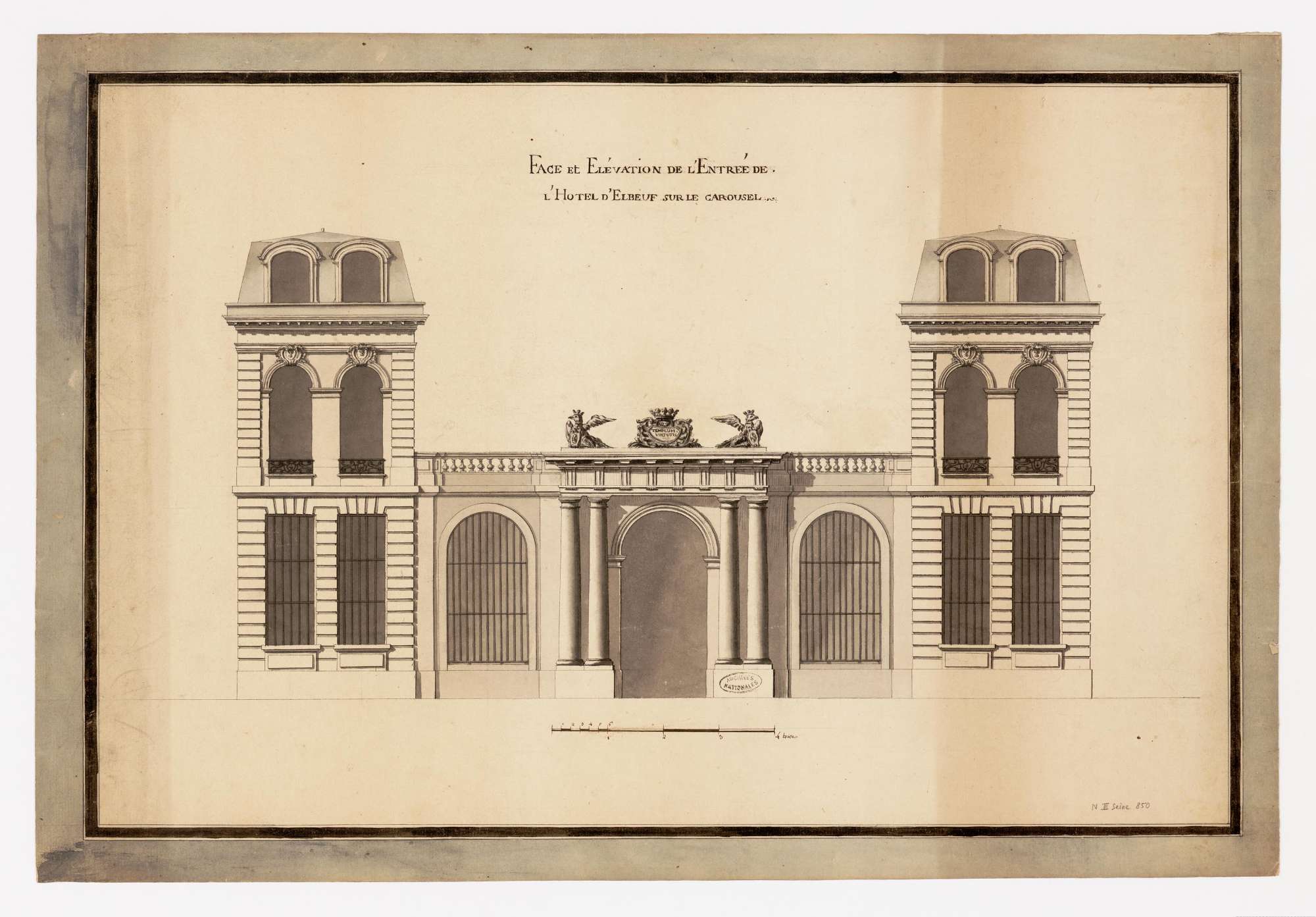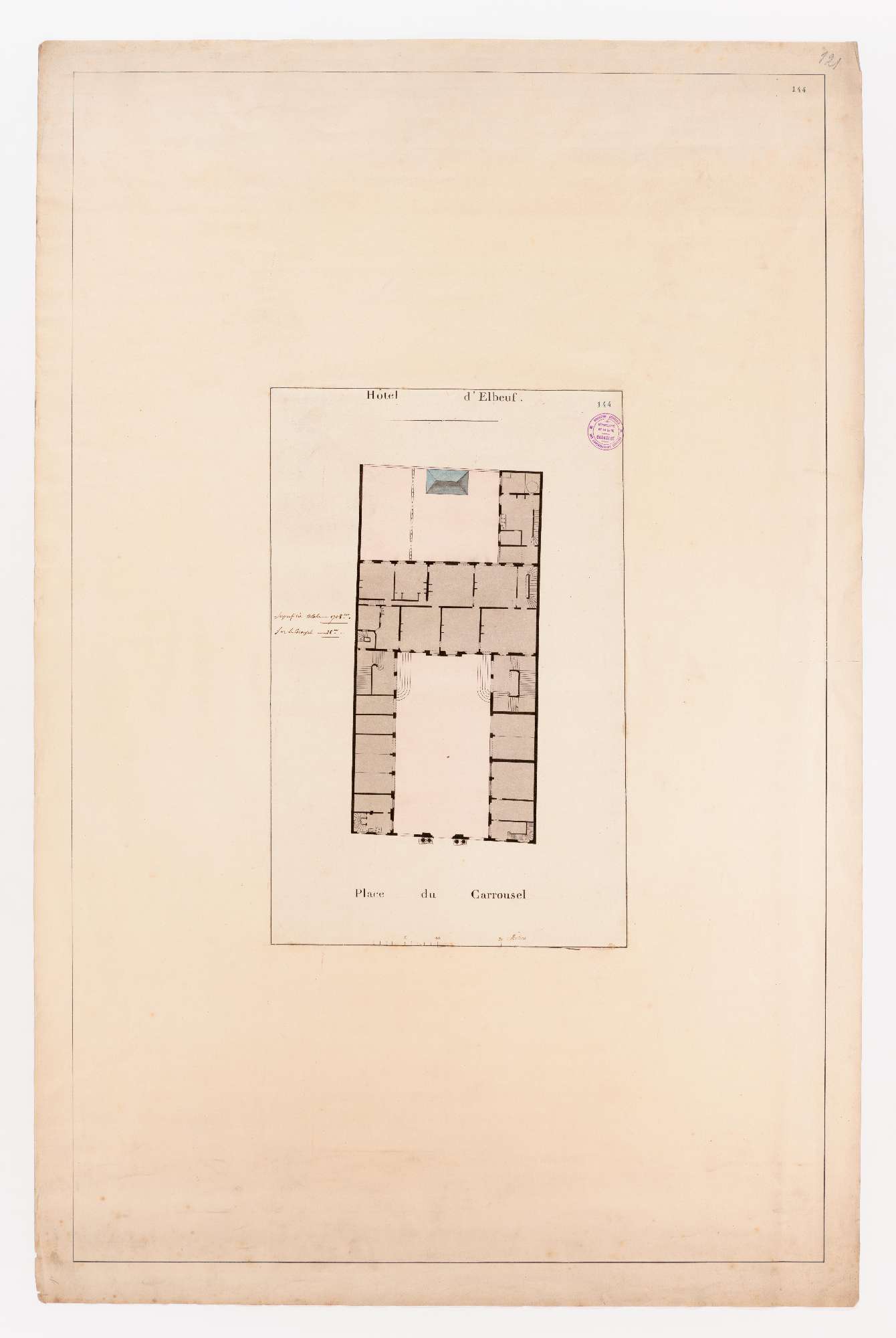Simon Macdonald writes:
A previous blog entry here noted that we don’t have any portrait of the duchess of Elbeuf, and we don’t even know for sure whether she had an art collection as such. Maybe she just didn’t much like paintings? Eighteenth-century France was full of art-historically significant names — Jean Siméon Chardin’s still lifes, Élisabeth Vigée Le Brun’s portraits, Jacques-Louis David’s history paintings. But that doesn’t mean that everyone at the time was enamoured of the fruits of the palette.
Still, we know she had a huge house in central Paris (see below). And, with so much wall space to fill, it seems unlikely that she had absolutely no pictures on them. In fact, we know quite a lot about the things she owned at the time of her death because more or less all her property then passed into the hands of the government.
Property confiscated by the revolutionary state, or which passed to the state by other kinds of forfeiture or sequestration, was carefully documented, with a view to finding items of value. That ‘value’ could come in the form of information. For example, a diary such as the kept by the duchess might hold secrets which could be politically useful to the regime. For that reason, officials felt it was worth reading — and worth retaining in the state archives. But mostly ‘value’ meant monetizable assets. This included real estate, investments, furniture, and indeed just about any kind of bric-a-brac which might attract a buyer at auction. Occasionally, particularly rare or valuable artefacts might be deemed sufficiently important to be turned into museum items — today’s Louvre Museum, for instance, is full of things like this — or to be placed in public libraries.
In the case of the duchess, various itemized inventories of her worldly possessions survive. These were made after this property passed into the hands of the state. Thanks to these, it is possible to reconstruct a lot of information about the household furnishings at her town palace in Paris. Her residence, called the hôtel d’Elbeuf, was situated on the place du Carrousel, right in the centre of the city. We have a handful of architectural drawings showing the house itself. These drawings were made after the building had been taken over by the state, following the duchess’s death, and they may themselves have been created as part of the process of disposing of the site. (The building was used by the government into the Napoleonic period, and was subsequent returned to her family. It was then torn down in the nineteenth century as part of Parisian urban renewal projects: it was located roughly where the Pyramid of the Louvre Museum is today.)
The inventories made by revolutionary officials around 1794 tell us, in hundreds of detailed entries, about the duchess of Elbeuf’s furniture, her library, her silverware, and just about everything else she owned in her Paris house. We also get a sense of the resale value of these items. From this it turns out that she wasn’t averse to grand display, and to vanity objects. For instance, she owned several big ornate mirrors, which were among the most valuable items in the house.
Yet there’s nothing recorded about her pictures. There’s a small caveat here, in that there are a few records of one of her relations having his own small apartment within her big Paris house around the time of the Revolution — and he did have a few pictures in his rooms, and these do show up in the records. But that makes it all the more curious that her own pictures seem to have disappeared without trace. So far, then, it’s a bit of a mystery. More time digging in the archives may yet shed some more light on this.
And, before we call off the search for all visual traces relating to the duchess d’Elbeuf, here is a spoiler for a future blog entry. Her diary occasionally tells us a bit about some of her family. It just so happens that her closest set of relations, and who are mentioned in the diary, were immortalized in a famous painting by Vigée Le Brun, now held in the National Gallery of Art in Washington. Watch this space for more on that in due course…


